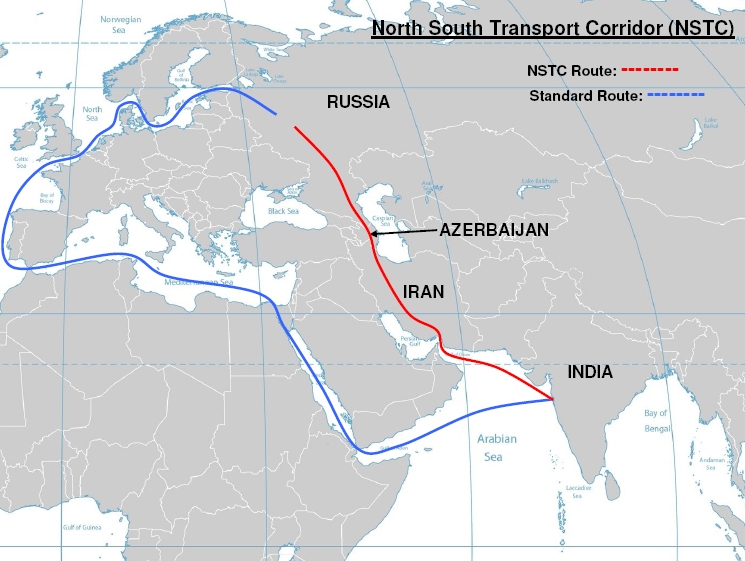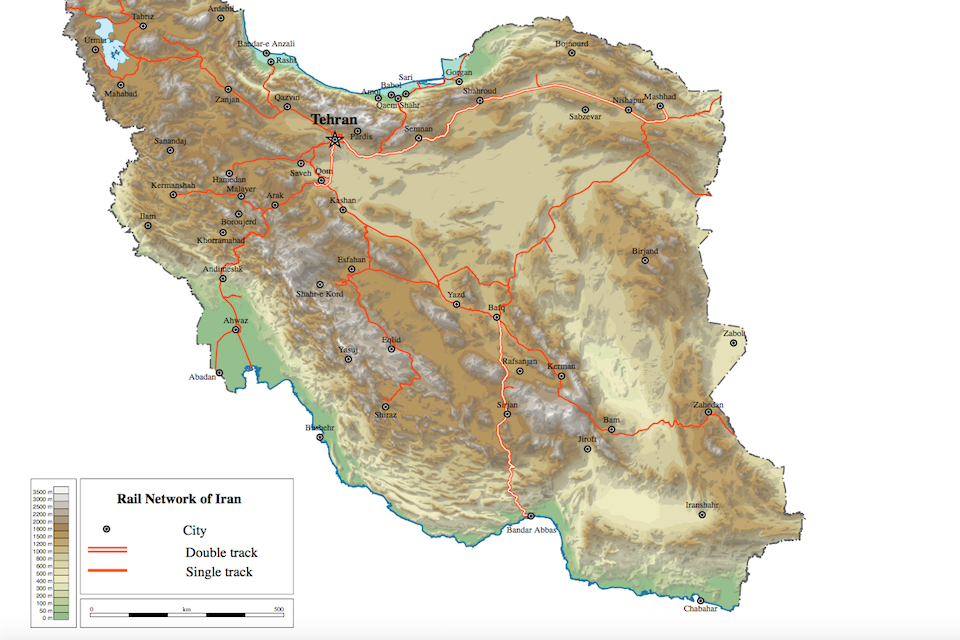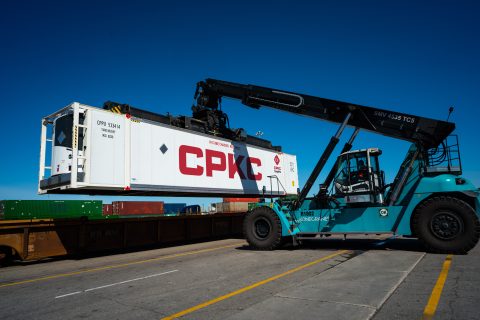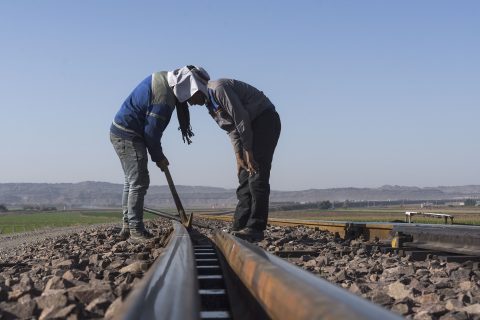Missing link on the Russia-India corridor: will it ever be made?

The Iranian missing link on the railway corridor from Russia to India is likely to remain missing for a while longer. The government is not very decisive when it comes to building the railway line between Astara and Rasht, as it is hoping for other infrastructure through Armenia and Azerbaijan to play a leading role. However, this line is subjected to political unrest.
This was explained by Amir Asra from the Iranian company MAPNA Locomotive in the latest edition of RailFreight Live. In this broadcast, the potential of the International North South Transport Corridor (INSTC) was discussed with Nurminen Logistics, which recently launched a rail freight service from Finland to India.
Below you can watch this show of RailFreight Live. The text continues below the video
Current bottleneck
The much-discussed train from Finland to India is currently on its way and will have accessed Iran, if everything went according to plan. It will have crossed the border between Azerbaijan and Iran at the Astara-Astara border crossing (both countries house the city with the same name) to arrive in the Iranian transhipment terminal of Astara.
But here, in the recently modernised facility, the train will not be able to proceed further south, as the railway line to Rasht is still missing. The cargo will be loaded onto trucks, to continue the journey by train in a later phase. This is by many considered the main missing link on the INSTC, which has so much potential as an overland alternative to six-week sea journey via the Suez Canal. In an ideal situation, the multimodal journey from Finland to India overland could be completed in around 22-25 days, explained Olga Stephanova, who works for Nurminen Logistics from Moscow.
Project on hold
“There is existing infrastructure through Armenia and Azerbaijan, but this route is currently closed due to political issues between these countries. The Iranian government is having financial and technical difficulties constructing the Rasht-Astara railway line. But they are also hoping that the existing route will be opened up again soon. It is hesitant to take a decision, as this route functions very well as a link between Russia and Iran and easily connects to the port of Bandar Abbas”, explained Asri in RailFreight Live.
However, everything could change with the change to a new government, which was recently elected. “We will have to see what this new government decides. But for the time being, the project is on hold”, he added.

‘It’s not the route that matters’
If you ask Stehpanova, the missing link is weighing too heavily on the reputation of the INSTC, which has been operative for a while. “It is not the route that matters, it is how it is operated.” According to CEO of Nurminen Logistics Olli Pohjanvirta, the journey is going smoothly, and there are no bottlenecks foreseen. “We expect the customer to be very happy with the service”, he said during RailFreight Live.
At the same time, the service is still in a trial phase, with the first departure launched in response to the specific demand of a large international company. “For the Nordics, this could be an interesting service if it is working as we expect. This means that it should comply with all the standards, and all the ports and partners are working in line”, he commented.
Railway line to Chabahar
Asked which infrastructure efforts should be taken in Iran to make the route more successful, Asri pointed to the railway route toward Chabahar, another port in the south of the country, which is located much closer to India than Bandar Abbas. Moreover, US sanctions do not apply at this port, and India is eager to invest in the the port as a transhipment hub.
At this point, there is a missing link here too; the railway line to Zahedan is considered vital for the accessibility of the port, and has been on the agenda for a long time. In fact, president of Iran Hassan Rouhani was reported saying this week that the vital railway link would be partially opened in the coming months, as it would “connect the port to the Caspian Sea and Turkmenistan through Inche Burun and eventually Astara”. But, as Asri commented, “this all depends on the willingness of the new government”.

Promotion of rail freight
The Iranian government is certainly eager to promote rail freight. It has repeatedly stated that it aims for a turnover of 100 million tons of cargo per year by rail. It wants to radically increase the modal share of rail, which is now nine per cent. The INSTC plays an important role. “It could attract a lot of transit traffic through Iran”, said Asri.
Although the main missing link on the INSTC may not be completed any time soon, the Iranian government has not sat idle. It opened the Astara transhipment terminal in February 2018, which stimulated traffic between Azerbaijan and Iran. The facility handled approximately 630,000 tonnes of freight in 2019, 38 per cent more than in the first year. Moreover, Iran completed the Rasht-Qazvin section in March 2019, which was then considered another missing link on the INSTC.
Current activity
Although the trip from Finland to India was a first-of-its-kind, the Russian Railway company RZD Logistics has been active on the route for a while. In 2019, it concluded an agreement with CONCOR Container Corporation of India, to explore joint logistics projects at the corridor. Since then, the parties reached a number of issues, including the use of CONCOR equipment on the INSTC.
Also read:
- First block train from Finland to India already on the move
- Forget about the Suez Canal, take the train from Helsinki to India
- Iran goes for rapid rail development to boost freight
- Astara terminal stimulates rail freight traffic to Iran
- Russia stops work on vital railway project Iran
- Indian container provider brings fleet to Russian-Indian corridor
- New services on International North-South Transport Corridor
You just read one of our premium articles free of charge
Want full access? Take advantage of our exclusive offer






